MELLERSH & NEALE - TERRITORIAL EXPANSION
It might be prudent at this point to dwell on the undertakings which have been absorbed into the business of Mellersh & Neale Ltd. Chapter Two showed how the Reigate Brewery had grown and had taken over other concerns within the town. Having consolidated its trading position by the virtual elimination of all competition within the Borough, there followed three-quarters of a century of stability and financial growth. By the end of the First World War, with the relaxation of restraints such as rationing, a great number of breweries were beginning to expand. Inroads upon the territory of Mellersh & Neale were being made from all sides, and competition from concerns such as Friary Brewery of Guildford, Bushell, Watkins, & Smith of Westerham, Page & Overton's of Croydon, and Hodgson's of Kingston were seen as a threat to the very survival of the brewery. This vulnerability would have to be redressed, and it became the policy, out of survival rather than profit, to expand by the acquisition of smaller concerns still trading within its empire.
To this end, on the 9th March 1922 the business assets of the Swan Brewery, Leatherhead, were purchased and the share capital and borrowing powers increased. £35,700 worth of 5% Debenture stock was secured by trust deed. [1]
You may also recall that in an earlier chapter I mentioned that the Leatherhead Brewery, together with the Reigate Brewery, were part of the estates of Thomas Cooper which were auctioned off by an Act of Parliament, after his death in 1806. In the bill of sale at that time, it was described as:
To this end, on the 9th March 1922 the business assets of the Swan Brewery, Leatherhead, were purchased and the share capital and borrowing powers increased. £35,700 worth of 5% Debenture stock was secured by trust deed. [1]
You may also recall that in an earlier chapter I mentioned that the Leatherhead Brewery, together with the Reigate Brewery, were part of the estates of Thomas Cooper which were auctioned off by an Act of Parliament, after his death in 1806. In the bill of sale at that time, it was described as:
"A freehold dwelling house, malt house, new brewery, seven store cellars, cooperage, three stables, mill house, and other outbuildings for carrying on the brewery trade, with a large garden and two tenements adjoining the yard, a barn, stable, cart lodge, yard and orchard at a small distance from the brewery, four tenements and a small garden to each….” [2]
Although referred to only as the Leatherhead Brewery, it is likely to be one and the same property as that advertised in the April 1st, 1811, edition of the Star newspaper [3], therein described as the Lion Brewery. One must assume that the owner must have run into some financial trouble to have wanted to re-sell the business within five years of acquiring it. The advertisement announced that an auction was to be held on Thursday April 11th, 1811, and described it as:
"A valuable freehold estate, comprising the Lion Brewery at Leatherhead, in the County of Surrey, constructed upon the best principle, and capable of carrying on a business of the first consequence, with seven large store cellars, malting houses, stabling, mill house, cooperage, dwelling house, counting house, and eight tenements, garden, yards, and paddock: the whole lying compact, and forming a considerable frontage in the centre of town, and contiguous to the intended new road from Kingston, which is to shorten the distance to Portsmouth. This circumstance may very fairly be presumed an additional consideration in the value of the property, from the great thoroughfare which must arise. The brew house is in the occupation of the proprietor, Mr. Clarke, who will give early possession and the purchaser is to take at a fair valuation the plant and utensils in trade. There are about twenty freehold, copyhold, and leasehold public houses attached to this trade, lying convenient, which the purchaser may at his exclusive option take at a fair valuation, and every facility will be given him by the proprietor as an introduction to the good will of this valuable property….”
Within two months the contents of the brewery came up for sale, and it is not clear whether the new owner had different designs on the building and wished to clear the plant out, or whether Mr Clarke, unable to find a buyer, had decided to postpone the sale, and then offer up the plant and utensils only in the subsequent auction. Whatever the truth of the matter, the second auction was held on 13th June, 1811, [4] and consisted of:
"...the whole of the plant, fixtures, and utensils of the Leatherhead Brewery, viz. an excellent brewing copper of 44 barrels, with a dome, mash tun, coolers, working tuns, vats of various dimensions, horse wheel, mill and pump work, casks, drays, horses, counting house furniture, a quantity of useful iron building materials, and other effects….”
Careful scrutiny of the sale catalogue conveys the impression that the premises were being completely gutted. Several of the lots would, out of necessity, have to be ripped out rather than merely removed. One such lot, number 41 in the catalogue, is a typical example: "..the whole of the brick and stonework of a 44 barrel copper, from foundation, including chimney shaft and pavement of stokehole….” This would have left quite a mess once removed!
There appears to be, between 1811 and 1874, a large gap in records with regard to brewing in Leatherhead. After 1811 there is no further reference to the Lion Brewery. The author suspects that the wholesale disposal of contents in 1811 preceded a total demolition of the property. However, in 1874, a newly erected brewery called the Swan Brewery sprang into existence. It would be most convenient to assume a connection between the two concerns, but since no records exist to prove or disprove this surmise, then we must keep an open mind and dwell upon the facts as we know them.
The Swan Brewery was erected in 1874 by Felix Walker, a Leatherhead builder, for George Moore, a local brewer, whose parents had lived for many years previously at the Swan Hotel which had a long history. William Moore (George's father) advertised in 1859, [5] as a wine and spirit merchant, brewer, and fly-master, carrying on such business at the Swan Hotel until his death in 1870. His widow, Emily, continued the trade during the ensuing four years until her son had the brewery erected behind the hotel. The locality was formerly the site of a worked-out pit, the "Old Swan Pit” being the name by which the excavation was popularly known.
The Brewers' Journal for January 1875 announced the completion of this new brewery, and had this to say:
"... the new steam brewery now nearly completed at Leatherhead, for Mr. George Moore will be opened this month. The building which is a prominent object when entering Leatherhead by the London Road is built in Italian style with red brick and concrete, blue and white moulded brick enrichments. One of the features of construction is the employment of concrete for the cellar walls, arches, walls and floors of the tun room, the lime used for this and throughout the building, being patent selenetic; and the cost of construction considerably less than brickwork. The chimney shaft is carried out in red, white, and blue brick with encourstic tile bands and unlike most chimneys, is an ornament to the building….
"...The brewery consists of a tower, containing on the upper floor, the mash tun, hot and cold liquor backs, the malt and hop store on the first floor, and engine pumps and malt mill on the ground floor, with grist being elevated to the upper or mash tun floor. A copper house adjoining, fitted with a receiving back, refrigerator, steam copper, and hop back on the ground floor; cellars running beneath this portion and the tower….
"...A covered gateway divides the tun room from this part of the brewery and gives access to the boiler house. The well which is bored from the surface 110 feet into chalk is 12 inches in diameter and linked with cast iron pipes, percolation of surface water being thus effectually prevented. As the water does not rise sufficiently high, it is lifted by ordinary pumps, the well is fitted with Kinsey's Artesial Pump which is suspended in the bore and so arranged that all valves and working parts may be inspected on the surface.” [6].
An itinerary of the brewery, written in 1904, [7] deals at greater length with the siting of the plant throughout the premises. Trying not to repeat the information contained in the above report, I shall itemise some of the details from the itinerary. The brewery is constructed on the tower principle. The tower contains on the ground floor an engine-room and mill-room, the second floor being used as a malt store, while on the third floor is the mash room, containing a twelve-quarter mash tun, malt hopper, and three tanks, for hot and cold water, with an aggregate capacity of four thousand gallons. In the tun room adjoining the previous block, beer-racking is carried out, and the room also contains the yeast waggons which catch the yeast from the fermenting vessels in the fermenting room above. ( There were 7 fermenting vessels in operation at first, but another was added in 1905 to meet growing demand.) From this room may be reached the stillion room, which houses about 500 barrels, and where each is racked before being let down to the cellar by means of a lift. The cellars are extensive, and stretch from underneath the tower into the area known as the Swan Yard and under the Swan stables. Between this portion of the site and that at the rear of the Council Offices ( which comprised the entire street frontage ) there is a private road, separating the stillion room from the stabling, - the latter having been provided a year or two earlier with loft over, and a covered way over the road extending a considerable distance. The offices are in the front of the block of buildings and are approached from the High Street, but they occupy only one wing of the structure, the rest being let off to various land agents. There is a frontage of about 60 feet, and the premises in the rear are contained within a rectangular quadrangle about 250 feet deep. Pale ales are the chief products of this undertaking, but stout and porter are also brewed, but not to such an extensive scale, so that pale ales constitute the principal output.
The foundations of the progressive success of this brewery was laid down by W. B. Heaver, George Moore's managing partner. He took up the management in 1876, and during his long term of 28 years in office, was instrumental in securing for the business a widespread popularity. This growth, which he had so earnestly promoted and fostered, was vigorously maintained under the capable management of his old pupil and successor (Mr.) Councillor J. W. James.
In 1903, upon the retirement of both Mr Heaver and George Moore, the business was offered for sale for £64,500 as a going concern with 21 public houses. The Brewers' Journal for September 1903 reported that the sale notice had been withdrawn because a private treaty agreement for a sum just short of the asking figure was arrived at between the two partners and a syndicate of local gentlemen under a local directorate, with J. W. James one of their number, as General Manager [8]. George Moore and Mr. Heaver approved of the prudence of this arrangement because they were perfectly aware that Mr. James had been acquainted with the town and district for over 35 years and that he had an intimate knowledge of the large district over which the concern extended its commercial operations. As soon as the sale had been concluded, Mr. James registered the business as the Swan Brewery Leatherhead Co. Ltd. with a capital of £50,000 in £100 shares, as the November 1903 edition of the Brewers' Journal stated:
"...to acquire and carry on the Swan Brewery and hotel at Leatherhead with 19 public houses, and to continue the business hitherto carried on by George Moore & Co., as brewers, maltsters, and wine and spirit merchants….” [9]
To give a fair idea of the volume of production at this brewery it may be stated that it was dispersed over an area within a 12 mile radius . It took in Redhill, Reigate, Ockley, Dorking, Gomshall & Shere, Guildford, Cobham, Hersham, Thames Ditton, Epsom, Ewell, Sutton, and Chessington. The Swan Brewery had houses at Hersham, Sutton, Epsom, Ewell, Dorking, Tadworth; and there were also belonging to it, The Plough, Ye Runnynge Horse, The Swan Hotel, and the Jug House ( Church Street ), all four in Leatherhead itself.
To have achieved these proportions, the undertaking had itself swallowed up four concerns within the neighbourhood: two, Dagnall's of Epsom and Lucock's of Dorking during the management of George Moore, and a further two, Boxall's of Dorking and Sayer's of Ashtead, since Mr James took over management.
It would perhaps be appropriate before dealing with other Mellersh & Neale acquisitions, to deal with those firms which the Swan Brewery had acquired, since ultimately, through the Swan Brewery, they became absorbed into the Mellersh & Neale empire.
The first of these was the White Horse Brewery at Epsom, which was run by Charles Dagnall. A deed of Conveyance exists, dated 3rd September 1879 [10], in which it is stated in the preamble that Charles Dagnall had for some time prior to the date of the document, plied his trade on the site as a lesee, and that this document was to convey to him in fee simple the brewery for the sum of £2000. In the deed, the brewery was described as
"....All that piece or parcel of land situate and being at Epsom, together with the brewery, vanhouse, coalshed with loft over, carthouse and store with loft over, and built thereon and the yard belonging to the same, the whole being enclosed with walls and gates which brewery is called or known by the name of the White Horse Brewery together with the goodwill, fixed plant and effects belonging or appertaining thereto, and all the singular, the houses, outhouses, buildings, yards, garden, ways, lights, fences, waters, watercourses, easements, and appurtenances whatsoever….”
On 27th June 1885 [11], George Moore & Co. acquired this going concern for £3,300, made up as £1,200 for the brewery, and £2,100 for the assignment of the leasehold premises stock and trade. It is interesting to note that the document lists the contents of the brewery and fixed plant:
"Fourth floor: Mash tun with cast tun false bottom, hot liquor back and copper coil, cold liquor back, malt and grist hoppers, steam hoist and fittings thereto.
Third floor: Malt mill and elevators, barling copper and fire back over.
Second floor: Hop back and cast tun false bottom with copper pumps, steam engine, fan, fermenting squares, refrigerator, wort cooler.
Ground floor: Steam boiler and fittings, well pump and driving gear, steam heating appurtenances around the tun room, steam cask washer, rising mains throughout the brewery with fixed taps and pipes, steps from and to the several floors of the brewery. The sparger.…”
It is also interesting to note that Charles Dagnall moved to Redhill after selling the White Horse Brewery to George Moore & Co., and set up another successful concern. (See chapter 9, dealing with Redhill).
The second brewery to be taken over by George Moore & Co. was that of W. & J. Lucock of Dorking. The Rock Brewery, situated on the south side of Dorking High Street, was founded by Edward Lucock in 1830. After his death in 1865, it was carried on by his widow Elizabeth, whose Old Ale, retailing at 8d per quart, was renowned throughout the district [12]. From about 1871, William and John Lucock continued the business until acquired by George Moore in 1890 [13]. It was retained by the Moore family as personal estate, and only conveyed to the Swan Brewery Co. Ltd., on lease for 31 years from 24th June, 1903 [14]. Therein it is described as:
"...A messuage, shop and cottage formerly known as the Rock Brewery….”
Part of the premises with the shop was leased to Messrs Freeman, Hardy & Willis Ltd, for 21 years from 24th June 1913 at £60 per annum.
It is also interesting to note that the concern was used as security by Mellersh & Neale Ltd. in 1922 for securing £35,700 5% Debenture Stock.
In 15th March 1907, the Swan Brewery Co. Ltd. acquired Boxall & Son's Sun Brewery, Dorking, together with 8 public houses: The Gun Beerhouse, North Street; The Royal Oak PH, Stonebridge; The Evening Star Beerhouse; The Sun Beerhouse, High Street; The Jolly Butchers, Deane Street; The Arundel Arms Hotel, Howard Road; The Wheatsheaf Inn, High Street, all in Dorking; and the Bridge House Hotel, East Street, Horsham.
The earliest reference available can be found in the Piggot's Home Counties Directory for 1839, in which is listed John Boxall, brewer, High Street, Dorking. The 1855 Post Office Directory contains an advertisment announcing:
"...The Sun Brewery, High Street, Dorking. William Boxall, brewer. Fine Ales. - London Porter and Stout. Agent to Barclay, Perkins, & Co….” William Boxall removed the business to a much larger site off Mill Lane in 1859 [15].
A deed of assignment dated 11th January 1859 records the purchase for £1000 from Joseph Fuller and William Harrington:
"...All those messuages or tenements with the buildings, curtelages, yards, gardens, orchards, backsides, and land or ground thereto belonging, and which consists of a tanyard adjoining to the side of the brook or stream there running sometime called Hancocks Brook, with a bark mill, tanhouse, buildings and yard thereunto adjoining and belonging, seven tenements and offices with garden, ground and land thereunto belonging, and a barn with a stable, chaisehouse and land….”
William Boxall mortgaged the property for the loan of £600 in 1862, and for a further £100 in 1864, to enable the building of a new brewhouse on the Mill Lane site. In order to repay the loan, and since he was approaching retirement age, he leased the brewery to his son Charles William and his grandson John. A lease, dated 29th September 1865 records the property as the Sun Brewery, and ran for a period of 21 years at £52 per annum, payable half-yearly. A further leasing document dated 14th November 1865, described the property as:
"...All that brewery, malthouse, yard, and outhouses together with the counting house and room over the same in the said yard, also with the fixtures, utensils, and things which were comprised in the schedule thereunder written and other the premises thereto belonging which said premises were situated in Mill Street….”
The schedule referred to in this document, itemised the fixtures as follows:
"...A sixteen barrel copper with wortback over, a six quarter English oak mashtun with malt mill attached, a hopback with cast iron plates and brass tap, one large cooler, driving machinery and wort pump and cold liquor pump and chaff cutting machines. Underback with lead pipe attached. In the Tun Room: two washing tuns with lead pipes attached and working troughs, underground lead pipes and taps to same....” [16].
By 1868, Charles Boxall had paid William Boxall a lump sum of £800 for the brewery, and in the following year a further £400 for the remainder of the tenancy, a total sum of £1200. From this moment on, Charles Boxall and his son John, traded together as Messrs Boxall & Son, brewers and maltsters, at the Sun Brewery, Mill Lane, Dorking [17]. An advertisement which appeared in the 1885 edition of Kelly's Directory of Surrey announced Boxall & Son to be Agents to Barclay, Perkins and Co. and also for Salt & Co.'s Burton Ales. It is interesting to note that the range of products available from the Sun brewery included XXX Ale, XX Ale, X Ale, Pale Bitter Ale, Family Ale, Porter, Single Stout, and Double Stout.
Sadly, on 28th March 1888, the Brewers' Journal announced the death of Charles Boxall following a courageous struggle against cancer of the throat [18].
John Boxall continued the enterprise alone until about 1897, when he handed over the business to his son, William Thomas Boxall who continued alone until the 1907 take-over. W. T. Boxall took a seat on the board of directors of the Leatherhead Brewery, where he remained until the latter concern was acquired by Mellersh & Neale Ltd. He died in 1936 leaving a personal estate of £15,481 [19].
One final note before we pass on to other acquisitions of Mellersh & Neale Ltd., is the enigma of Sayers Ashtead Brewery. Four public houses and the brewery were leased by George Sayer junior to the Swan Brewery Co. Ltd. on the 31st March 1913 [20]. The Swan Brewery immediately closed down brewing operations at Ashtead, supplying the 4 pubs from Leatherhead, and established a mineral water factory on the site.
However, four years after the Mellersh & Neale take-over of the Swan Brewery, the freehold of the Ashtead Brewery was offered by George Sayer to Mellersh & Neale. A conveyance, dated 29th September 1926 for a consideration of £20,000 listed the business and properties, which consisted of the Brewery Inn, Ashtead; The Royal Oak Beerhouse, Great Bookham; and The Chalkpit Off-licence, The Cricketers Inn, and the Jolly Coopers, in Epsom.
I have not yet managed to discover a great deal about the history of this undertaking. There is certainly a reference as early as 1859, when in the Kelly's Directory for that year a George Sayer, brewer, Ashtead, is listed. The County Brewers' Gazette for April 1888 announced the death of George Sayer, and his son, George junior, appears to have been listed in the directories for up to as much as ten years prior to his father's death [21]. He remained in control of the business right up until 1913, being joined by his son Edmund when the latter came of age.
It is interesting to note that the Brewery Inn is still open, and inside the public house are photographs of the brewery as it was in 1912 before its demolition. The old mineral factory at the rear of the inn was leased in 1934 to messrs Champion Brothers as a joinery works.
Beside the four pubs listed above, Sayer had an off-licence at Tulse Hill, which he used as a profitable outlet for his beers.
An advertisment from the turn of the century announces 8 different brews on offer to the public: Triple-X Mild Ale, Double-X Mild Ale, Pale Ale Bitter, AKK Bitter, AK Bitter, Double Stout, Single Stout, and Porter, with the announcement "...All brewings guaranteed from Barley malt and English Hops only. 5% for cash on delivery.” All brews available in 36, 18, 9, and 4.5 gallon casks. [22]
To summarise, therefore, Mellersh & Neale by the Spring of 1922 has absorbed the Swan Brewery Co. Ltd., of Leatherhead [23], and by the Autumn of 1926, Sayer's Ashtead Brewery. Mr J. W. James took a seat on the board of Directors of Mellersh & Neale [24] and remained there until his death on 21st November 1936, aged 71. He left estate to the value of £13, 986 [25].
This was by no means the end of the story. On 22nd June 1931, the business of R. & F. Pagden Ltd., of Epsom, was acquired together with 14 pubs. The deeds to the Epsom brewery go back as far as 1769 when it was in the hands of the Keeling family who were also brewers in Clerkenwell, and the property was Copyhold of the Manor of Ebbisham [26]. Trayton and Stephen Pagden were listed in Piggot's Home Counties Directory for 1839, and an indenture dated 5th November 1841 exists [27], drawn up between an Edward Whitmore, a bankrupt, and Trayton Peter Pagden of Ebbisham, brewer:
"...The said Edward Whitmore hereby demises, and covenants to the said Trayton Peter Pagden, the Copyhold messuage, coach house, wash house, brewhouse, stables, and garden of half an acre, abutting on Church Street, on the south western part; of land then late of Lord Baltimore, on the north eastern part; of Tom's Lane on the south eastern part; and of a copyhold tenement on the north western part....”
Sometime between 1855 and 1867, ownership passed from Trayton and Stephen Pagden to Robert and Frederick Pagden who conducted the business for many years thereafter. The famous Epsom racecourse grandstand became the trademark of the concern and was registered on 5th September, 1896, the address being given as R. & F. Pagden, Hope Brewery, Epsom (TM. 197. 737).
Pagdens was registered as a Private Company in July 1925, as reported in the Brewers' Journal for 15th August of that year, "...with a capital of £18,000 to adopt an agreement with E.Pagden, C.F.Cope, and F.W.Butler and to carry on the business of brewers and beer retailers in all its branches as formerly carried on by E.Pagden and others at Epsom as R.& F.Pagden, and that of maltsters, Hop Merchants, etc….” There was no public issue of shares which were set at £1 each, and the directors were A.S. and L.K.Pagden, J.W.Neale, and C.F.Cope.
The subsequent acquisition of the concern by Mellersh & Neale in 1931 led to the substantial gain of a further 14 pubs, mostly in or around Epsom [28]. Among them were The Queen's Head, The Old King's Head, and the George, Epsom; The King's Head, Leatherhead; The Harrow, Cheam; The Bonesgate, Chessington; The Fox, Kingswood; and the Whyte Harte, Bletchingley, in which latter village it was reported that in the Parliamentary elections of 1832, the cobbles "...ran with beer….”
With the acquisition, Lionel King Pagden joined the Mellersh & Neale board of Directors, where he remained until 1938.
It can be seen, therefore, that by the time of Mellersh & Neale's own closure in 1938, the brewery had accumulated 90 licensed properties (81 freeholds, 1 copyhold, and 8 leaseholds). Before this two or three properties had been sold, and in addition a licence was held with the home premises permitting the sale of four quart crates or one dozen half pints of beer. Of the licenced houses, 70 held full licences (PH), 10 held beer licences only (BH), 5 held beer and wine licences (BW), and 5 were off-licences (OL). The list below gives the properties and indicates their date of acquisition and provenance:
COPYHOLDS.
The Black Horse, Reigate. PH. 05.09.1899 S.W.Neale. (ex. Coopers).
FREEHOLDS.
The Amato Inn, Woodcote, Epsom. PH. 22.06.1931. Pagdens.
The Anchor, Redhill. PH. 05.09.1899. S.W.Neale.
The Angel Inn, Reigate. PH. 05.09.1899. S.W.Neale. (ex. Coopers).
The Arundel Arms, Dorking. PH. 09.03.1922. Swan Brewery (ex. Boxalls).
The Bell Inn, Reigate. PH. 05.09.1899. S.W.Neale.
The Blue Anchor, Worth. PH. 05.09.1899. S.W.Neale.
The Bones Gate, Chessington. PH. 22.06.1931. Pagdens.
The Brewery Inn, Ashtead. PH. 29.09.1926. Sayers.
The Bricklayers Arms, Tadworth. BW.
The Bridge House, Horsham. PH. 09.03.1922. Swan Brewery. (ex. Boxalls).
The Bulls Head, Reigate. PH. 05.09.1899. S.W.Neale.
The Clermont Inn, Headley. PH.
The Cock Hotel, Headley. PH. 05.09.1899. S.W.Neale.
The Coppingham Arms, Horley. PH. 05.09.1899. S.W.Neale.
The Cottage of Content, Merstham. PH. 22.06.1931. Pagdens.
The Cricketers Inn, Epsom. PH. 29.09.1926. Sayers.
The Crown, Turners Hill, Worth. PH. 05.09.1899. S.W.Neale.
The Dukes Head, Tadworth. PH. 22.06.1931. Pagdens.
The Eclipse, Epsom. PH. 22.06.1931. Pagdens.
The Evening Star, Dorking. BW. 09.03.1922. Swan Brewery. (ex. Boxalls).
The Falklands Arms, Dorking. PH. 05.09.1899. S.W.Neale.
The Flying Scud, Redhill. BH. 05.09.1899. S.W.Neale.
The Fox Inn, Norwood Hill. PH. 05.09.1899. S.W.Neale.
The Fox Hotel, Kingswood. PH. 22.06.1931. Pagdens.
The George, Epsom. PH. 22.06.1931. Pagdens. (ex. Coopers).
The Greyhound, Redhill. PH. 05.09.1899. S.W.Neale.
The Greyhound, Lingfield. PH. 05.09.1899. S.W.Neale. (ex. Coopers).
The Greyhound, Tinsley Green. PH. 05.09.1899. S.W.Neale.
The Gun, Dorking. BH. 09.03.1922. Swan Brewery. (ex. Boxalls).
The Half Moon, Charlwood. PH. 05.09.1899. S.W.Neale.
The Harrow Inn, Cheam. PH. 22.06.1931. Pagdens.
The Horse & Groom, Merrow. PH. 05.09.1899. S.W.Neale.
The Holmesdale Inn, Reigate. PH. 05.09.1899. S.W.Neale.
The Jolly Butchers, Dorking. BH. 09.03.1922. Swan Brewery. (ex. Boxalls).
The Jolly Coopers, Epsom. PH. 29.09.1926. Sayers.
The Jolly Farmers, Buckland, BW. 05.09.1899. S.W.Neale.
The Jug House, Sutton. OL. 09.03.1922. Swan Brewery.
The Jug House, Leatherhead, OL. 09.03.1922. Swan Brewery.
The Junipers, Epsom. OL.
The Kings Head, Leatherhead. PH. 22.06.1931. Pagdens.
The Lesbourne Hall, Reigate. PH. 05.09.1899. S.W.Neale.
The Lord Nelson, Ewell. BH.
The Mint Arms, Kingswood. BW. 09.03.1922. Swan Brewery.
The Marquis of Granby, Redhill. PH. 05.09.1899. S.W.Neale.
The Old Oak, Meadvale. PH. 05.09.1899. S.W.Neale.
The Oval Tavern, Croydon. PH.
The Plough, Bletchingley. PH. 05.09.1899. S.W.Neale.
The Plough, Earlswood. PH. 05.09.1899. S.W.Neale.
The Plough, West Ewell. PH. 09.03.1922. Swan Brewery.
The Plough, Leatherhead. PH. 09.03.1922. Swan Brewery.
The Plough, Smallfields. PH. 05.09.1899. S.W.Neale.
The Prince of Wales, Outwood. PH. 05.09.1899. S.W.Neale.
The Prince of Wales, Reigate. BH. 05.09.1899. S.W.Neale.
The Prince of Wales, Westcott. PH.
The Queens Arms, Redhill. PH. 05.09.1899. S.W.Neale.
The Queens Head, Nutfield. PH. 05.09.1899. S.W.Neale.
The Queens Head, Epsom. PH. 22.06.1931. Pagdens.
The Railway Arms, Westhumble, BW. 05.09.1899. S.W.Neale.
The Railway Hotel, Godstone. PH. 22.06.1931. Pagdens.
The Railway Hotel, Reigate. PH. 05.09.1899. S.W.Neale.
The Red Cross Hotel, Reigate. PH. 05.09.1899. S.W.Neale. (ex. Coopers).
The Red Lion, Dorking. PH. 05.09.1899. S.W.Neale. (ex. Coopers).
The Red Lion, Buckland. PH. 05.09.1899. S.W.Neale.
The Red Lion, Bletchingley. PH. 05.09.1899. S.W.Neale.
The Rifleman, Sutton. OL. 09.03.1922. Swan Brewery.
The Robin Hood, Reigate. BH. 05.09.1899. S.W.Neale.
The Royal Oak, Dorking. PH. 09.03.1922. Swan Brewery (ex. Boxalls).
The Royal Oak, Bookham. BH. 29.09.1926. Sayers.
The Running Horse, Leatherhead. PH. 09.03.1922. Swan Brewery.
The Station Hotel, Nutfield. PH. 05.09.1899. S.W.Neale.
The Spotted Cow, Brockham. BH. 05.09.1899. S.W.Neale.
The Sun, Dorking. BH. 09.03.1922. Swan Brewery. (ex. Boxalls).
The Surrey Oaks, Newdigate. PH.
The Thorns, Horley. PH. 05.09.1899. S.W.Neale.
The Wheatsheaf, Banstead. PH. 22.06.1931. Pagdens.
The White Harte, Bletchingley. PH. 22.06.1931. Pagdens.
The White Hart, West Hoathly. PH. 05.09.1899. S.W.Neale.
The White Horse, Epsom. PH. 09.03.1922. Swan Brewery. (ex. Dagnalls).
The White Lion, Redhill. PH. 05.09.1899. S.W.Neale. (ex. Coopers).
The Yew Tree, Reigate. PH. 05.09.1899. S.W.Neale.
Ye Olde Kings Head, Epsom. PH. 22.06.1931. Pagdens.
LEASEHOLDS.
The Builders Inn, Copthorne. PH. 05.09.1899. S.W.Neale.
The Cross Keys, Sutton. BH. 05.09.1899. S.W.Neale.
The Jug House, Epsom. OL. 05.09.1899. S.W.Neale.
The Plough, Coldharbour. PH. 05.09.1899. S.W.Neale.
The Royal Oak, Felday. PH. 05.09.1899. S.W.Neale.
The Running Horses, Mickleham. PH. 05.09.1899. S.W.Neale.
The Two Woodcocks, Tulse Hill. BH. 05.09.1899. S.W.Neale.
The Warwick Hotel & Tap, Redhill. PH. 05.09.1899. S.W.Neale.
The empire was thus consolidated, but as the next chapter will reveal, far from secure. The activities of Mellersh & Neale now extended over a vast area. Deliveries of beer were being made as far west as Merrow, near Guildford, as far north as Tulse Hill in the metropolis, as far east as Lingfield on the borders with Kent, and as far south as Horsham and West Hoathly, both deep in the heartlands of Sussex.
REFERENCES.
1. Neale Papers; Brewery Manual 1923.
2. Cooper, T. Will 13 Aug 1807. Ibid.
3. The Star, 1st April 1811. Copy in posession of the Leatherhead & District Local History Society.
4. Sale Catalogue dated 13th June 1811 in possession of Leatherhead & District Local History Society.
5. The Epsom Handbook, 1859. pp50 - 51.
6. BJ, January 1875.
7. Leatherhead Observer, 5th Aug. 1904. Leatherhead & District Local History Society.
8. BJ, September 1903.
9. BJ, November 1903.
10. Friary Meux.
11. BJ, May 1885.
12. KD of Wine & Spirit Trades, etc, 1884; POD of Brewers, etc., 1877; Brewers Directory & Licensed Victuallers Guide. published by Walker, 1871.
13. Friary Meux.
2. Cooper, T. Will 13 Aug 1807. Ibid.
3. The Star, 1st April 1811. Copy in posession of the Leatherhead & District Local History Society.
4. Sale Catalogue dated 13th June 1811 in possession of Leatherhead & District Local History Society.
5. The Epsom Handbook, 1859. pp50 - 51.
6. BJ, January 1875.
7. Leatherhead Observer, 5th Aug. 1904. Leatherhead & District Local History Society.
8. BJ, September 1903.
9. BJ, November 1903.
10. Friary Meux.
11. BJ, May 1885.
12. KD of Wine & Spirit Trades, etc, 1884; POD of Brewers, etc., 1877; Brewers Directory & Licensed Victuallers Guide. published by Walker, 1871.
13. Friary Meux.
14. Ibid.
15. Ibid
16. Ibid
17. Ibid
18. BJ, 28th March 1888.
19. BTR, 1st October 1936, p458.
20. Friary Meux.
21. County Brewers Gazette, April 1888.
22. Andrew's Directory. 1910.
23. BTR, 1st November 1921, p465.
24. BTR, 1st June, 1922, p236.
25. BTR, 1st December 1936, p554; also BTR February 1937, p78.
26. Friary Meux. Ref, P44. (Indenture 21st Aug 1769).
27. Friary Meux.
28. BTR September 1921 suggests Pagdens having been acquired by Barclays of Southwark, but Mr Graham Neale refutes this assertion. There may, however, have been a trading agreement between the two businesses, the ties being of such a nature that they warranted Barclays headboards to be displayed prominently on Pagdens pubs. I have several photos of Pagdens pubs displaying such boards.
18. BJ, 28th March 1888.
19. BTR, 1st October 1936, p458.
20. Friary Meux.
21. County Brewers Gazette, April 1888.
22. Andrew's Directory. 1910.
23. BTR, 1st November 1921, p465.
24. BTR, 1st June, 1922, p236.
25. BTR, 1st December 1936, p554; also BTR February 1937, p78.
26. Friary Meux. Ref, P44. (Indenture 21st Aug 1769).
27. Friary Meux.
28. BTR September 1921 suggests Pagdens having been acquired by Barclays of Southwark, but Mr Graham Neale refutes this assertion. There may, however, have been a trading agreement between the two businesses, the ties being of such a nature that they warranted Barclays headboards to be displayed prominently on Pagdens pubs. I have several photos of Pagdens pubs displaying such boards.
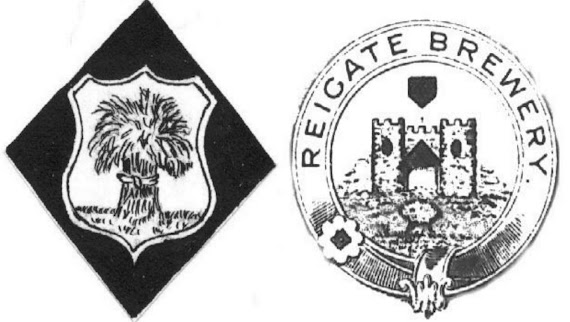


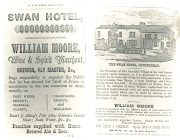
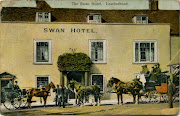
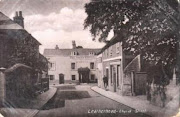
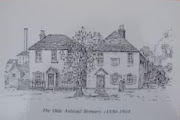
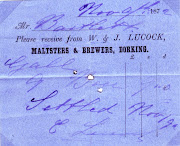
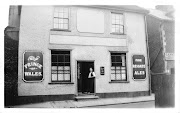
No comments:
Post a Comment